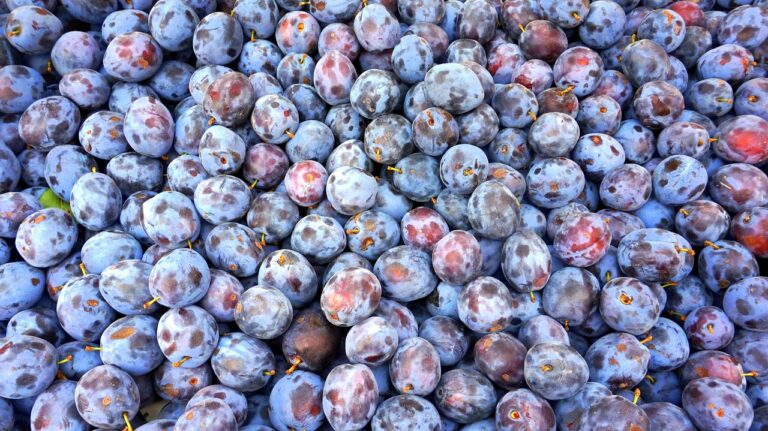Exploring the Potential of Cellular Agriculture in the Food Industry
Cellular agriculture, also known as lab-grown meat or cultured meat, is a revolutionary field that aims to produce animal products such as meat, milk, and eggs in a lab setting using cell culture techniques. This innovative approach involves extracting stem cells from an animal and then cultivating them in a controlled environment to replicate the growth of actual animal tissues. By doing so, cellular agriculture offers a sustainable and ethical alternative to traditional animal agriculture by significantly reducing the environmental impact and animal suffering associated with conventional farming practices.
Moreover, cellular agriculture has the potential to address global food security issues by providing a more efficient and resource-saving method of food production. With the world population projected to reach over 9 billion by 2050, there is a growing concern about the ability of current agricultural practices to meet the increasing demand for protein-rich foods. By producing animal-based foods through cellular agriculture, we can minimize land use, water consumption, and greenhouse gas emissions associated with traditional livestock farming, thus contributing to a more sustainable and resilient food system for future generations.
Benefits of Cellular Agriculture in Food Production
Cellular agriculture offers a promising solution to address the environmental impact of traditional animal farming by producing meat, dairy, and other animal-based products from cultured cells. By eliminating the need for raising and slaughtering animals, this innovative approach significantly reduces greenhouse gas emissions, water usage, and land requirements associated with conventional livestock agriculture. This shift towards cellular agriculture also has the potential to alleviate issues related to deforestation and biodiversity loss, contributing to a more sustainable and eco-friendly food production system.
Furthermore, cellular agriculture has the capacity to enhance food security by providing a controlled and efficient method of producing animal-based products. With the ability to customize nutritional content and flavour profiles, this technology opens up new possibilities for creating healthier and more diverse food options. Moreover, the scalability of cellular agriculture allows for greater production consistency and a more predictable supply chain, ultimately helping to meet the increasing global demand for protein-rich foods in a more resource-efficient manner.
Challenges and Limitations of Cellular Agriculture
One of the key challenges faced by cellular agriculture is the high production costs associated with scaling up cellular meat production. The process of cultivating cells in a lab setting requires significant resources, including expensive growth factors and bioreactor equipment. As a result, the cost of cellular meat products is currently much higher than traditional animal-derived products, making it less accessible to the average consumer.
Another limitation of cellular agriculture is the regulatory hurdles that companies in this field must navigate. The technology is relatively new and is not yet fully covered by existing food safety regulations. As a result, cellular agriculture companies are often faced with uncertainty around how their products will be regulated and labeled, which can create barriers to market entry. Additionally, public perception and acceptance of cellular agriculture products remain a challenge, as some consumers may be hesitant to embrace meat that is grown in a lab rather than raised on a farm.
• High production costs associated with scaling up cellular meat production
• Expensive growth factors and bioreactor equipment required for cultivating cells in a lab setting
• Cost of cellular meat products currently much higher than traditional animal-derived products
• Regulatory hurdles faced by companies in the cellular agriculture field
• Technology is relatively new and not fully covered by existing food safety regulations
• Uncertainty around how products will be regulated and labeled, creating barriers to market entry
• Public perception and acceptance of cellular agriculture products remain a challenge
• Some consumers may be hesitant to embrace meat grown in a lab rather than raised on a farm
What is cellular agriculture?
Cellular agriculture is a method of food production that involves growing animal cells in a laboratory setting to create meat, dairy, and other animal products without the need to raise and slaughter animals.
What are some benefits of cellular agriculture in food production?
Some benefits of cellular agriculture include a more sustainable and environmentally friendly way of producing animal products, reduced animal suffering, and the potential to create healthier and more nutritious food options.
What are some challenges and limitations of cellular agriculture?
Some challenges and limitations of cellular agriculture include the high cost of production, the technological limitations of scaling up production, regulatory hurdles, and consumer acceptance of lab-grown meat.
How can cellular agriculture help address food security and sustainability issues?
Cellular agriculture has the potential to reduce the environmental impact of traditional animal agriculture, such as reducing greenhouse gas emissions and land use, and provide a more efficient way to produce animal products to feed a growing global population.
Will cellular agriculture completely replace traditional animal agriculture in the future?
It is unlikely that cellular agriculture will completely replace traditional animal agriculture in the near future, as there are still technological and regulatory challenges to overcome. However, it has the potential to play a significant role in the future food system.





